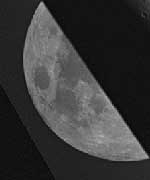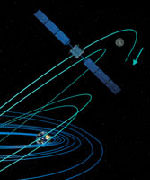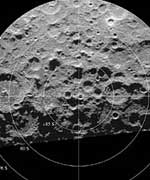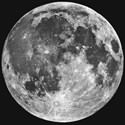When you hear someone say “Once in a Blue Moon?” you know what they mean: Rare. Seldom. Maybe even absurd. After all, when was the last time you saw the moon turn blue?
On July 31st, you should look, because there’s going to be a Blue Moon.
According to modern folklore, a Blue Moon is the second full moon in a calendar month. Usually months have only one full moon, but occasionally a second one sneaks in. Full moons are separated by 29 days, while most months are 30 or 31 days long; so it is possible to fit two full moons in a single month. This happens every two and a half years, on average.
July has already had one full moon on July 2nd. The next, on July 31st, is by definition a Blue Moon.
But will it really be blue? Probably not. The date of a full moon, all by itself, doesn’t affect the moon’s color. The moon on July 31st will be pearly-gray, as usual. Unless….
There was a time, not long ago, when people saw blue moons almost every night. Full moons, half moons, crescent moons–they were all blue, except some nights when they were green.
The time was 1883, the year an Indonesian volcano named Krakatoa exploded. Scientists liken the blast to a 100-megaton nuclear bomb. Fully 600 km away, people heard the noise as loud as a cannon shot. Plumes of ash rose to the very top of Earth’s atmosphere. And the moon turned blue.
Krakatoa’s ash is the reason. Some of the ash-clouds were filled with particles about 1 micron (one millionth of a meter) wide–the right size to strongly scatter red light, while allowing other colors to pass. White moonbeams shining through the clouds emerged blue, and sometimes green.
Blue moons persisted for years after the eruption. People also saw lavender suns and, for the first time, noctilucent clouds. The ash caused “such vivid red sunsets that fire engines were called out in New York, Poughkeepsie, and New Haven to quench the apparent conflagration,” according to volcanologist Scott Rowland at the University of Hawaii.
Other less potent volcanos have turned the moon blue, too. People saw blue moons in 1983, for instance, after the eruption of the El Chichon volcano in Mexico. And there are reports of blue moons caused by Mt. St. Helens in 1980 and Mount Pinatubo in 1991.
The key to a blue moon is having in the air lots of particles slightly wider than the wavelength of red light (0.7 micron)–and no other sizes present. This is rare, but volcanoes sometimes spit out such clouds, as do forest fires:
“On September 23, 1950, several muskeg fires that had been quietly smoldering for several years in Alberta suddenly blew up into major–and very smoky–fires,” writes physics professor Sue Ann Bowling of the University of Alaska. “Winds carried the smoke eastward and southward with unusual speed, and the conditions of the fire produced large quantities of oily droplets of just the right size (about 1 micron in diameter) to scatter red and yellow light. Wherever the smoke cleared enough so that the sun was visible, it was lavender or blue. Ontario and much of the east coast of the U.S. were affected by the following day, but the smoke kept going. Two days later, observers in England reported an indigo sun in smoke-dimmed skies, followed by an equally blue moon that evening.”
In the western U.S., there will be wildfires burning on July 31st. If any of those fires produce ash or oily-smoke containing lots of 1-micron particles, the Blue Moon there could be blue.
More likely, it’ll be red. Ash and dust clouds thrown into the atmosphere by fires and storms usually contain a mixture of particles with a wide range of sizes. Most are smaller than 1 micron, and they tend to scatter blue light. This kind of cloud makes the Moon turn red; indeed, red Blue Moons are far more common than blue Blue Moons.
Absurd? Yes, but that’s what a Blue Moon is all about. Step outside at sunset on July 31st, look east, and see for yourself.
Original Source: NASA Science Article




